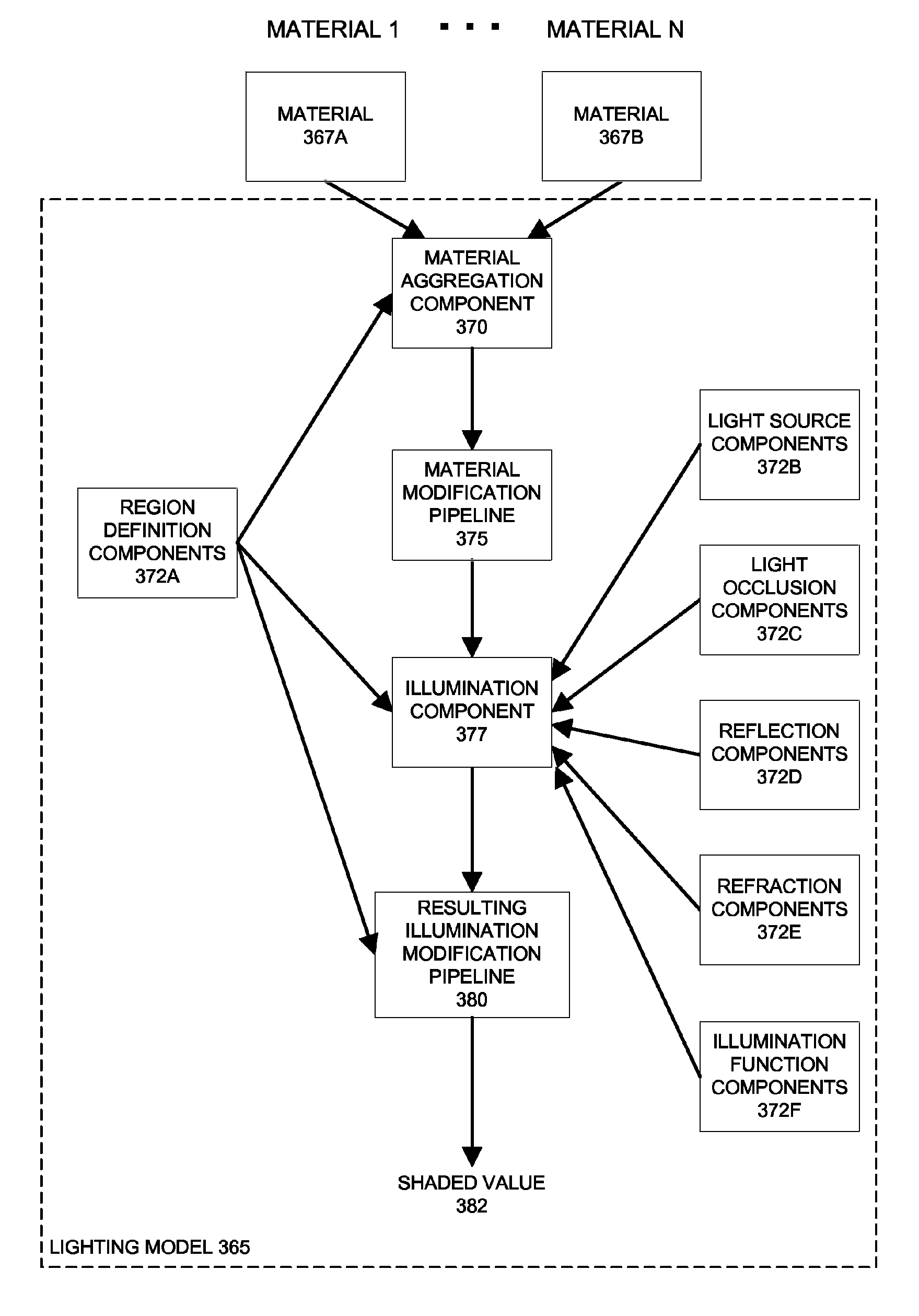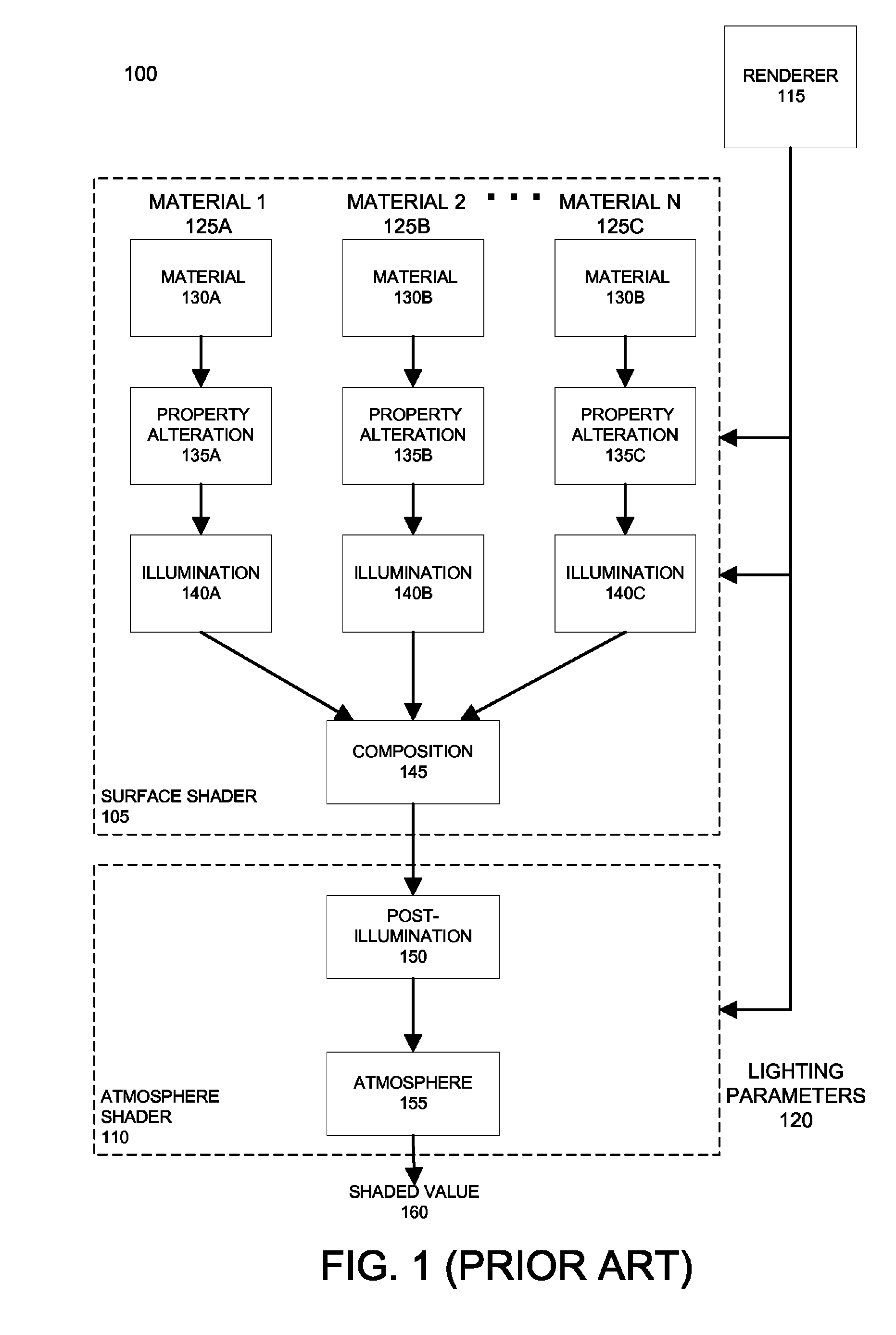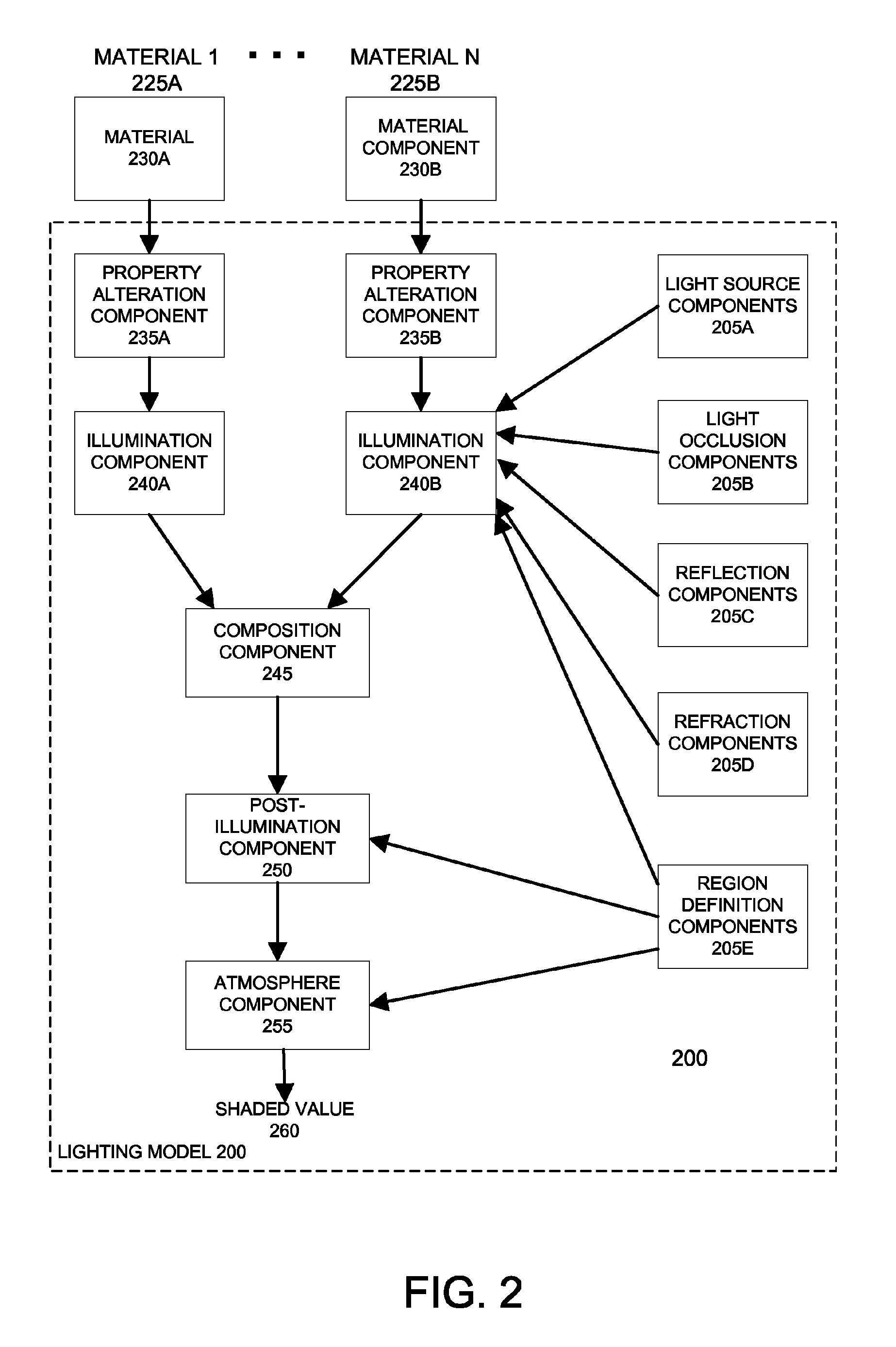Component-based lighting
- Summary
- Abstract
- Description
- Claims
- Application Information
AI Technical Summary
Benefits of technology
Problems solved by technology
Method used
Image
Examples
Embodiment Construction
[0022]FIG. 1 illustrates a prior architecture 100 for representing lights in computer graphics systems. Architecture 100 includes two monolithic shader programs, a surface shader program 105 and an atmosphere shader program 110. A renderer 115 executes shader programs 105 and 110 at least once for each portion of scene geometry, such as a micropolygon or polygon fragment, that potentially contributes to the value of a pixel or sub-pixel sample in a rendered image.
[0023]The surface shader program 105 determines the shading from the interaction of one or more lights with the portion of scene geometry. In one implementation, surface shader program 105 handles the shading of one or more lights potentially illuminating a portion of scene geometry, such as a particle, a micropolygon, or a polygon fragment associated with a surface or a volume. The properties, such as the color, opacity, displacement, or normal vector, of each portion of scene geometry can be defined, at least in part, by ...
PUM
 Login to View More
Login to View More Abstract
Description
Claims
Application Information
 Login to View More
Login to View More - R&D
- Intellectual Property
- Life Sciences
- Materials
- Tech Scout
- Unparalleled Data Quality
- Higher Quality Content
- 60% Fewer Hallucinations
Browse by: Latest US Patents, China's latest patents, Technical Efficacy Thesaurus, Application Domain, Technology Topic, Popular Technical Reports.
© 2025 PatSnap. All rights reserved.Legal|Privacy policy|Modern Slavery Act Transparency Statement|Sitemap|About US| Contact US: help@patsnap.com



